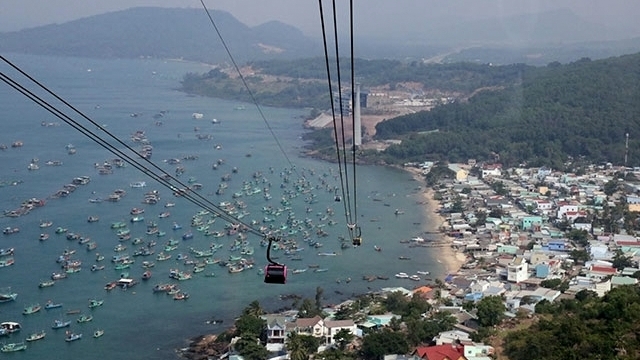


|
The cable car system, invested in by Sun Group, is the world’s longest sea
cable car route.
Invested in by Sun Group, a prominent real estate developer in
Vietnam, the route has a length of nearly 8 km, with the one end located in
An Thoi town and the other on Hon Thom island, the largest of the An Thoi
island cluster to the south of Phu Quoc Island district.
The Hon Thom cable car system is the first and most important
installation of the Sun World Hon Thom Nature Park in the southern area of
Phu Quoc Island.
The system has 70 cars capable of carrying 30 passengers each
and uses the three-rope cable car technology that is the safest and most
modern in the world.
The system and the Sun World Hon Thom Nature Park will
officially open to tourists on February 14.
The cable car system connects An Thoi town with Hon Thom island
in Phu Quoc Island district.
According to Sun Group, the fare for adults and children over
1.3 m tall is VND500,000/pax; children under 1.3m to 1m VND350,000/pax; and
children under 1 m are free of charge.
Located on the Vienam-Cambodia-Thailand marine economic corridor,
Phu Quoc is dubbed the "pearl” island.
Phu Quoc National Park is one of the most attractive places in
the district. It is home to 929 plant species, of which 42 are listed in the
Vietnamese and world red books of endangered species. The park is part of the
Kien Giang biosphere reserve, which was recognised as a World Biosphere
Reserve by UNESCO in 2006.
In January, nearly 260,000 tourists visited Phu Quoc Island, an
annual increase of 51%. International tourists increased by 40% against the
same period last year. On average the district welcomed about 7,000
holidaymakers each day. It targets to serve at least half a million
international tourists in 2018.
|
Source: NDO